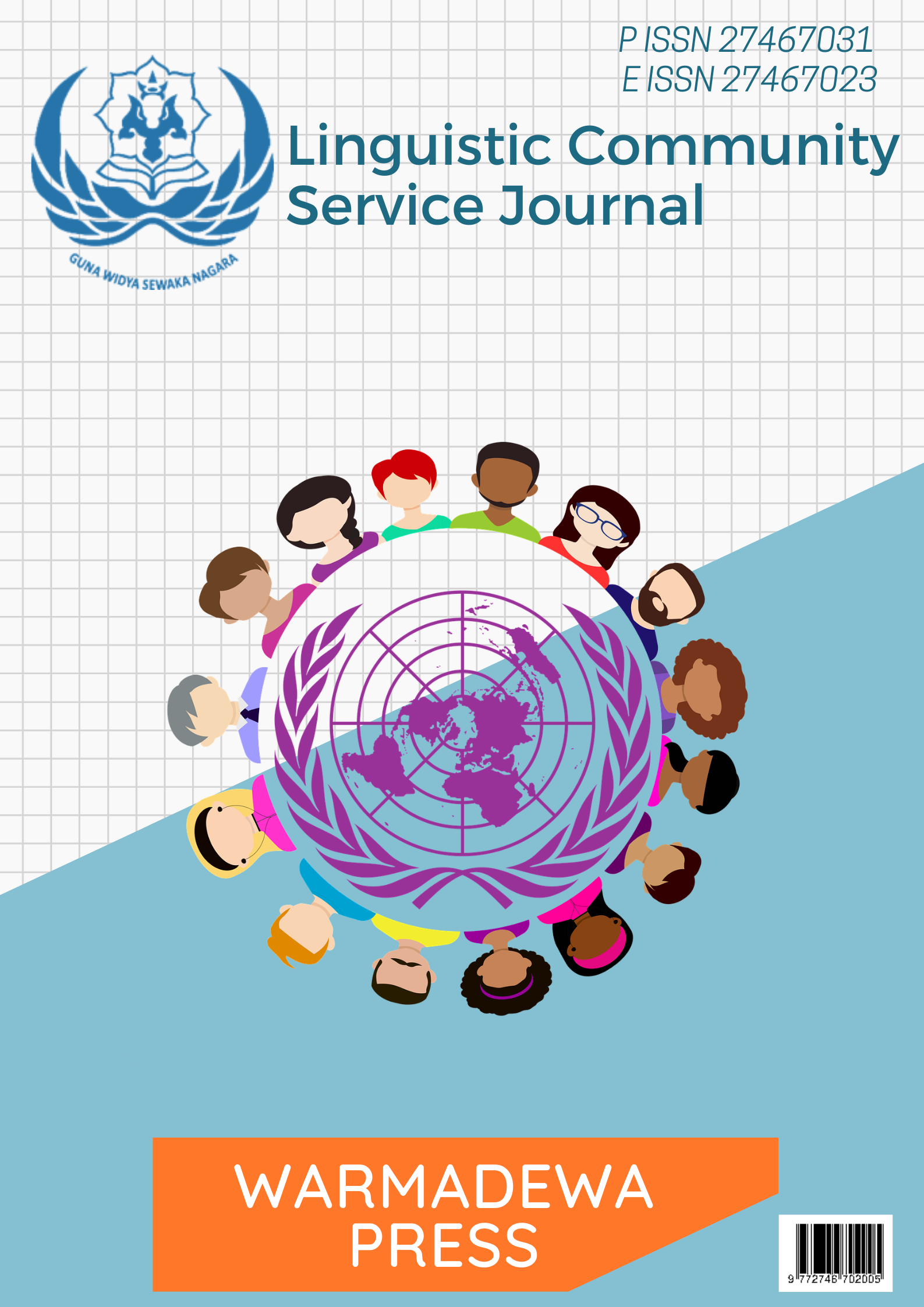Language Documentation on Local Culinary of Oa-Cusse Ambeno, Timor Leste
DOI:
https://doi.org/10.22225/licosjournal.2.1.2021.13-19Keywords:
Culinary Linguistics, Traditional Culinary, Timor LesteAbstract
Traditional culinary is a representation of a society that becomes a cultural identity. With the presence of these traditional culinary delights, it can be a means of introducing social, cultural and tourism life. As with other countries, Timor Leste is rich in cuisine, especially traditional culinary delights that have a big role in preserving the lives of its people. Basically, food does not only focus on consumption but also enhances the image of society and informs the condition of the people. In this case, the Master of Linguistics at Warmadewa University collaborates with Escolla TÑcnica Vocacional Publico De Palaban, Pante-Macassar, Oa-Cusse Ambeno, Timor Leste which through this international community service activity held a socialization in the form of preservation of traditional Timorese culinary by presenting the community, especially the generation young people for the introduction of tools, materials and procedures for making traditional culinary delights and their relation to linguistics in the form of vocabulary. This study shows the interest of the younger generation in their efforts to preserve traditional culinary delights. This research uses a case study research type to get maximum results. The results of this service state that the community, especially the younger generation, can follow the socialization well and understand the procedures for making traditional culinary delights and are able to name the types of food and describe each procedure.
References
Araujo, E. B. (2016). Pengembangan Kuliner Lokal Sebagai Daya Tarik Wisata di Dili, Timor Leste. JUMPA, 3(1), 15–27.
Atrinawati, R. A. (2019). Javanese Culture Maintenance by Keeping Traditional Javanese Food and Beverage Name in Tegal Regency Traditional Culinary Tourism. Journal of Cultural, Literary, and Linguistic Studies, 3(2), 41–46.
Fitrisia, D., Sibarani, R., Mulyadi, & Ritonga, M. U. (2018). Traditional Food in the Perspective of Culinary Linguistics. International Journal of Multidisciplinary Research and Development, 5(2), 24–27.
Gerhardt, C., Frobenius, M., & Ley, S. (2013). Culture and Language Use Studies in Anthropological Linguistics CLU-SAL. In Culinary Linguistics: The Chef’s Special. Amsterdam: John Benjamins Publishing Company.
Guerrero, L., Claret, A., & Verbeke. (2010). Perception of Traditional Food Products in Six European Regions Using Free Word Association. Jurnal Food Quality and Preference, 21(2), 225–233.
Jabonillo, J. P. B.-A. (2016). Pagkaong Binol-Anon: A Preliminary Research on Boholano Culinary Linguistics. In Sciences-New York. Quezon: University of the Philippines Diliman.
Simpson, J. (2011). Technology and Language Learning at Byu. In CALICO Journal (Vol. 1, Issue 3). Routledge.
Syarifuddin, D., Noor, C. M., & Rohendi, A. (2018). Memaknai Kuliner Lokal Sebagai Daya Tarik Wisaya. Jurnal Abdimas, 1(1), 55–64.
Szatrowski, P. E. (2014). Language and Food: Verbal and Nonverbal Experiences. John Benjamins Publishing Company.
Victoria, Fromkin, & Curtiss, S. (2000). Linguistics An Introduction to Linguistic Theory. Blacwell.
Downloads
Published
Issue
Section
License
This journal provides immediate open access to its content on the principle that making research freely available to the public supports a greater global exchange of knowledge.
All articles published Open Access will be immediately and permanently free for everyone to read and download. We are continuously working with our author communities to select the best choice of license options, currently being defined for this journal as follows: Creative Commons-Non Ceomercial-Attribution-ShareAlike (CC BY-NC-SA)














